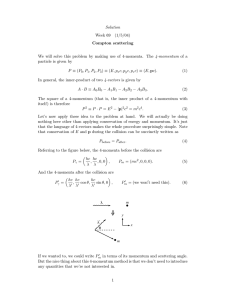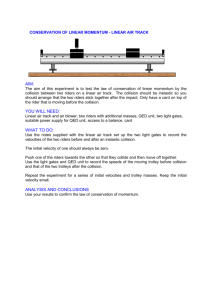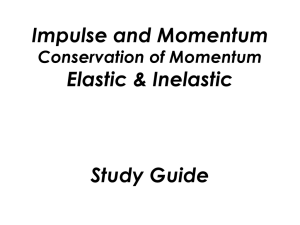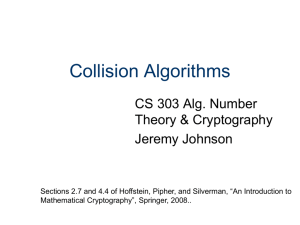Word
advertisement
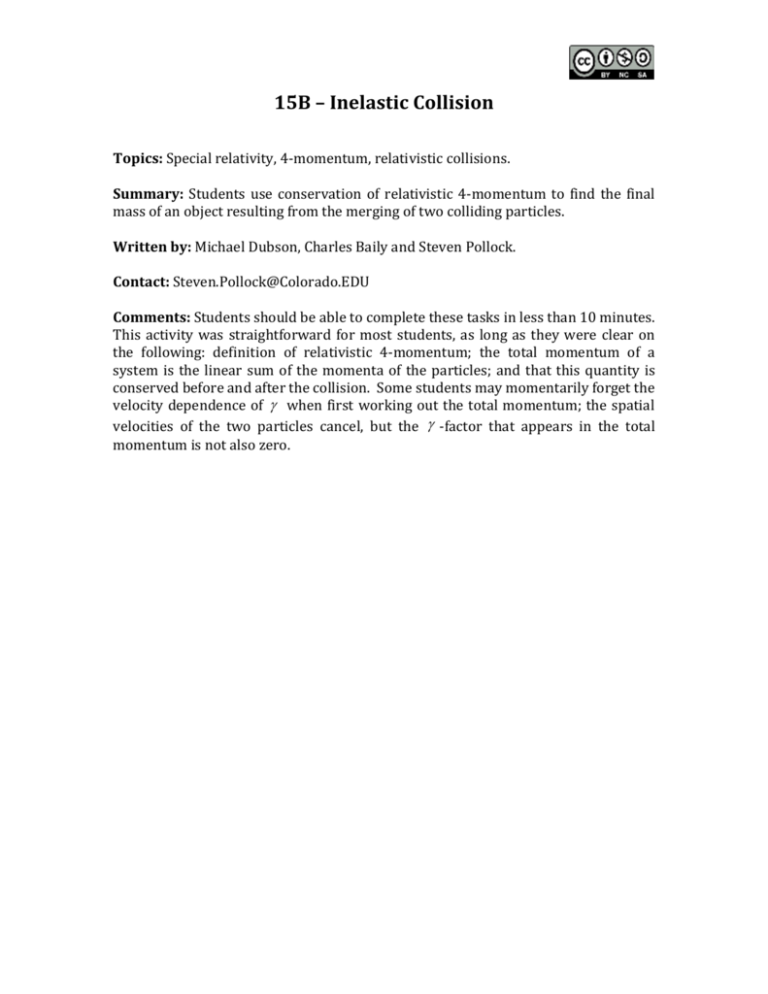
15B – Inelastic Collision Topics: Special relativity, 4-momentum, relativistic collisions. Summary: Students use conservation of relativistic 4-momentum to find the final mass of an object resulting from the merging of two colliding particles. Written by: Michael Dubson, Charles Baily and Steven Pollock. Contact: Steven.Pollock@Colorado.EDU Comments: Students should be able to complete these tasks in less than 10 minutes. This activity was straightforward for most students, as long as they were clear on the following: definition of relativistic 4-momentum; the total momentum of a system is the linear sum of the momenta of the particles; and that this quantity is conserved before and after the collision. Some students may momentarily forget the velocity dependence of when first working out the total momentum; the spatial velocities of the two particles cancel, but the -factor that appears in the total momentum is not also zero. 15B - Inelastic Collision NAME_________________________________________________ E dx dy dz p , px , py , pz m c, , , c d d d Consider the following 1-D collision: Two objects of mass m , both with speeds u , collide head-on and merge into a single object of mass M . (A) Write down an expression for the total 4-momentum of this system before the collision. (B) Write down an expression for the total 4-momentum of this system after the collision. (C) Solve for M in terms of m and u . (D) Notice that the kinetic energy after the collision is less than the kinetic energy before the collision. Where did this energy go? (E) Check that your answer for M makes sense in the non-relativistic limit u = c . 1

